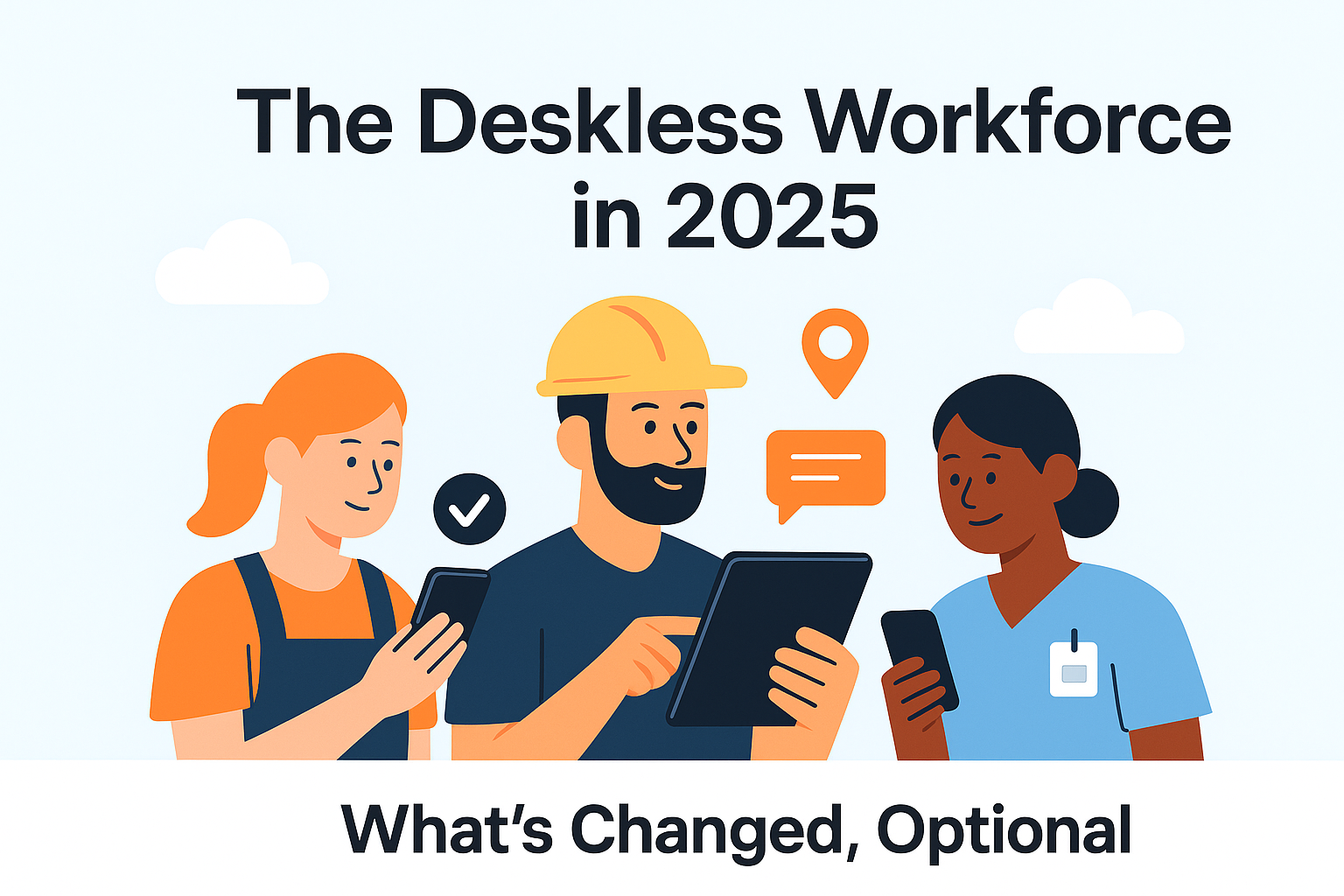Not everyone sits at a desk to get work done. In fact, most don’t. We’re talking about field techs, warehouse teams, delivery crews, people in scrubs, and folks on factory floors. These are the people who keep operations moving — and yet, for years, their digital experience lagged behind.
That’s starting to change — finally. And in 2025, the shift is no longer optional.
Mobile Tools That Actually Work in the Field
Let’s be honest — just handing out a company phone doesn’t solve much. What teams need now are tools that fit into their day, not ones that slow it down. We’re talking:
– apps that load without a perfect signal,
– forms that don’t take ten taps to fill out, and
– dashboards that show what matters right now, not yesterday.
The best platforms today feel like they were designed by someone who’s been on the warehouse floor — not just read about it.
Communication That Flows Both Ways
Managers have always had channels to broadcast info — but what about listening? In 2025, the difference-makers are companies who’ve built feedback loops that don’t require meetings. Quick polls. Shift feedback buttons. A space to say, “Hey, this tool is broken,” without it disappearing into the void.
It’s not about micromanagement. It’s about showing people their input matters — and following through.
Smarter Schedules, Less Drama
Turns out, when you give people some say in when they work — they show up. Shocker, right?
Scheduling in 2025 isn’t just about slots and shifts. Modern systems let staff set preferences, flag conflicts, or even swap in-app. For supervisors, it means fewer last-minute no‑shows. For workers, it’s one less thing to stress about.
One App. That’s It.
Most frontline staff don’t want five apps to check five things. They want one place where they can clock in, see their shift, ask a question, or request time off.
The best companies figured this out and dumped the patchwork systems. The rest? Still getting calls at 7 a.m. because “the app isn’t working again.”
Show Me the Numbers (That I Care About)
More workers want visibility — not into corporate strategy, but into their own work.
– How many jobs did I finish today?
– How long did that inspection take?
– Did I miss any flags?
When you put this kind of data in people’s hands, weird things happen: they start optimizing themselves.
Security That’s Invisible (But Solid)
Most people use their own phones now. That’s reality. So in 2025, security doesn’t come in the form of scary IT memos — it’s baked in:
– fingerprint logins,
– automatic timeouts,
– no data left behind after logout.
The goal? Keep things secure without making life harder.
AI That Actually Helps, Not Annoys
AI is everywhere, sure — but in deskless roles, it needs to do something. In some tools, you’ll find:
– voice prompts walking through a repair step-by-step,
– smart alerts if something looks off,
– visual scans that help ID equipment issues.
It’s subtle, useful, and doesn’t feel like a robot breathing down your neck.
Final Thoughts
If you’re building tech for people who don’t sit at desks, here’s the golden rule: don’t make their jobs harder. Make tools that disappear into the workflow — not ones that add more taps, screens, or confusion.
In 2025, the companies getting this right aren’t just more efficient. They’re seeing lower turnover, tighter safety records, and — no surprise — happier teams.
Because when you meet people where they work, everyone wins.

